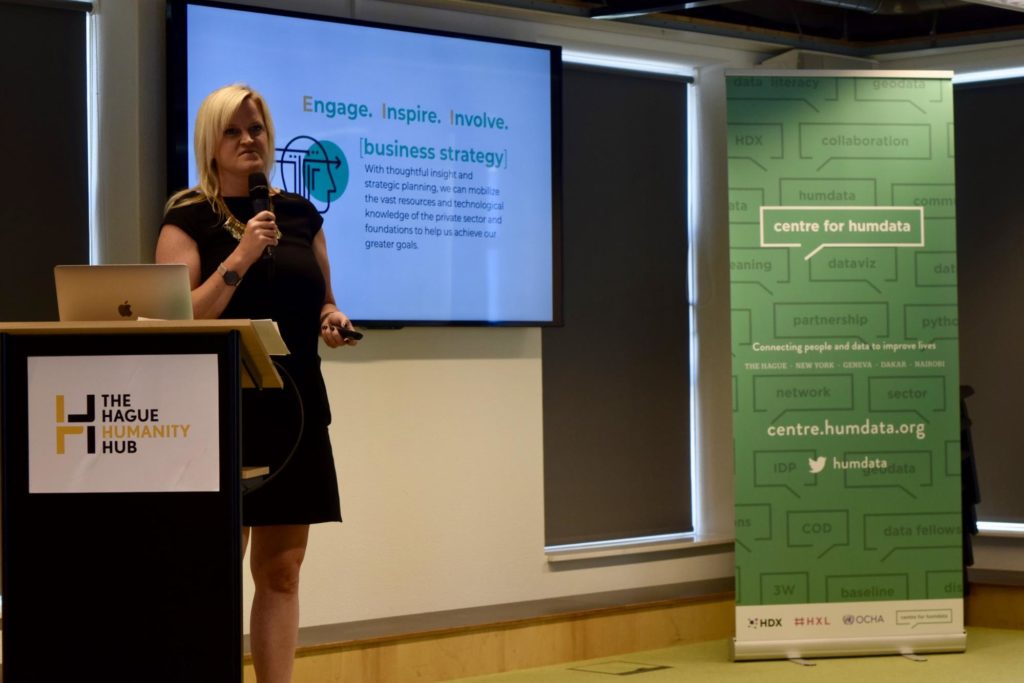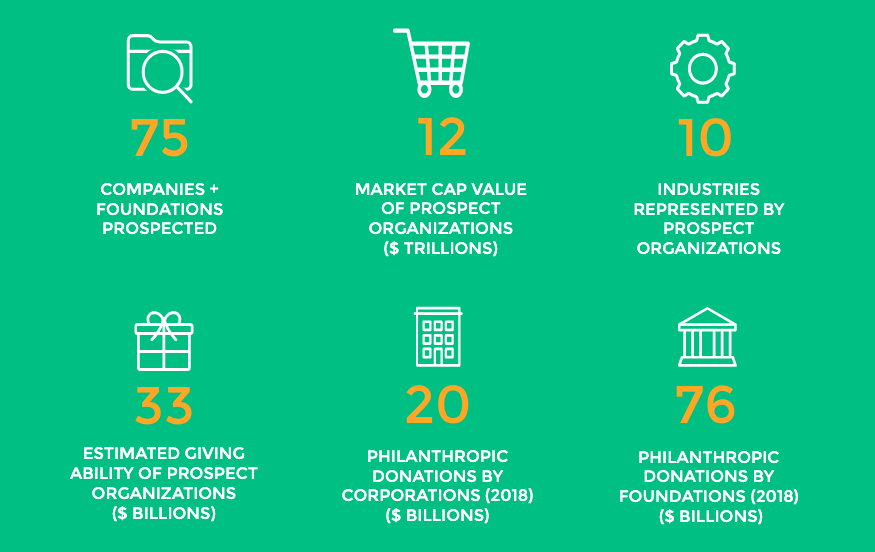Share
As the Business Strategy Fellow, I explored the sustainability of the Centre through an entrepreneurial lens and examined potential partnerships with the private sector and foundations that could increase the impact of their work on data. In this blog, I describe the goals, areas of focus and approaches that should be incorporated into a new framework for strategic partnerships.
“No one can whistle a symphony. It takes the whole orchestra to play it.” — H.E. Luccock
The Centre’s vision is to create a future where all people involved in humanitarian crises have access to the data they need to make responsible and informed decisions. Partnerships will be critical to realizing this.
Although data is important to a variety of stakeholders, the private sector is at the forefront of progress being made in the field of data technology. Robust data provides an undeniable competitive advantage. As a result, private companies make significant investments in this area and are often on the cutting edge of data collection and corresponding technologies.
The stakes are far greater for humanitarian agencies because they are focused on saving lives, not turning profits. That’s why collaboration is key. Engaging with the corporate world can play a significant role in assisting humanitarian organizations during a crisis, accelerating progress and getting access to new sources of data. In addition to financial contributions, private companies are equipped to create systems for disseminating information and to build critical infrastructure.
Broad areas for collaboration might include:
- Data sharing: Continue to increase the number and quality of datasets on the HDX platform and help partners and users create insight with their data.
- Technology expertise: Training or direct support for areas such as predictive analytics and data visualization.
- Human resources: Harness talent for specific projects or events.
- Sponsorship: Funding to support events and workshops.
My fellowship project focused on developing a partnership strategy for the Centre with a focus on the private sector and foundations. The objective is to enable resource mobilization and scale capabilities within a three-year timeframe. The strategy identifies opportunities to forge new alliances and shepherd high-quality leads all the way to close.

Understanding the Centre’s heart zone
I started my research by working with the Centre team to understand their priorities across data services, data policy, data literacy and predictive analytics. Using a well-known entrepreneurial model, we explored each workstream to find the core focus or ‘heart’ of what they do. What is each team passionate about? What do they excel at? How do they create value for the people they serve? That point where all three intersect is known as the ‘heart zone’. Taking into account each of the workstream’s heart zones and core functions, we landed on three main elements that power the Centre: data, trust and partners. All three are needed to ensure that the Centre can become the world’s leading expert on humanitarian data. Being clear about this focus is the first step in seeking out partners to accelerate the impact of the Centre’s work.
Goals for partnerships
The Centre is uniquely positioned to serve a central role in global humanitarian efforts. This is largely due to the recent increased focus on the collection and use of data in humanitarian response. As a result, partners around the world are developing new initiatives—and expanding existing ones—to use data to solve challenges. These include large data gaps, inconsistent methodologies, the slow pace of data processing, and the application of advanced technologies such as artificial intelligence and machine learning.
This additional investment is beneficial to the Centre. The breadth of challenges facing the sector will require more data and data scientists to analyze humanitarian crises and assist people in need. This cannot be solved by the efforts of a single player, and it underscores the importance of strong, dynamic coordination and the need for partnerships with a variety of organizations.
When building out partnerships, the following questions should be asked:
- How can we create shared value for both organizations?
- What issues and current problem areas should we address together?
- How can we be unique and set the collaboration apart?
- Which workstream(s) should the collaboration support?
Prospective partners
As part of my research, I conducted a prospecting exercise that reviewed relevant corporate and foundation partners. Overall, corporate giving in 2018 increased to $20 billion — a 5% increase from 2017, and foundation giving in 2018 increased to $76 billion — a 7% increase from 2017. In gathering information about potential prospects, I used the following criteria: 1) do they provide funding?; 2) what is their market cap?; and 3) do they have an interest in the humanitarian sector and/or the data-for-good space?
My landscape analysis found 75 companies and foundations that align with the Centre’s goals. The total estimated giving ability of the potential prospect organizations exceeded $33 billion. This reiterates the availability of resources and the need for a strategy to tap into them further. I went on to define an initial set of marquee partners for the Centre and provided a deep dive into tactics related to each partner.

Recommendations and quick wins
The following steps are proposed for developing strategic partners for the Centre:
STEP #1: Focus initial outreach and approach on up to six marquee partners (4 private sector, 2 foundations).
STEP #2: Offer small, achievable goals that can be developed and expanded over time.
STEP #3: Solicit partner involvement with tiered funding options or event sponsorship.
STEP #4: Evaluate best practices.
STEP #5: Once partnerships have started, expand to look-alike partners.
The changes the Centre is attempting to affect are monumental in nature. They will take years to achieve with the coordinated effort of multiple organizations. In its search for partnerships within the private sector, the Centre should be well prepared and follow a structured approach when evaluating and establishing possible partnerships. Both in the selection stage (which partners to approach) and in the engagement stage (discussing the details and execution of the partnership), a tactical approach is advised for optimal results.
It is vital that the Centre be deliberate with its approach to partnership and find quick wins to build on. These quick wins (i.e., within a 6-12 month timeframe) will provide momentum and positive reinforcement for the team. More importantly, the learnings from this work will make all subsequent efforts more efficient and better formed. From this foundation, the Centre can continue to iterate, refine, and optimize their approach to partnership and ultimately make progress towards their ambitious vision.
Watch Blair Palmer present the results of her fellowship on business strategy at the Centre’s Data Fellows Programme Showcase event in The Hague in July 2019.
The Centre’s Data Fellows Programme is undertaken in partnership with the Education Above All Foundation. Learn more about the 2019 Data Fellows Programme, see video and photos from final presentations at the Data Fellows Programme Showcase, and read about the work from the Programme Lead and Data Science (Education), Predictive Analytics, and Statistics (Disability Data) Fellows.